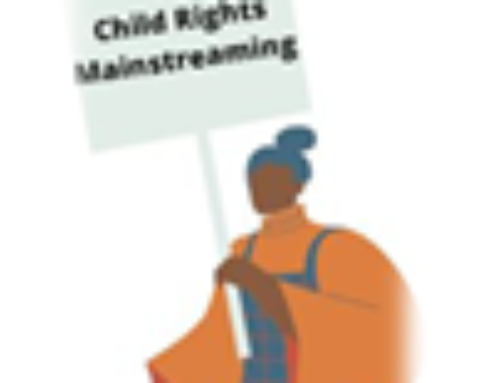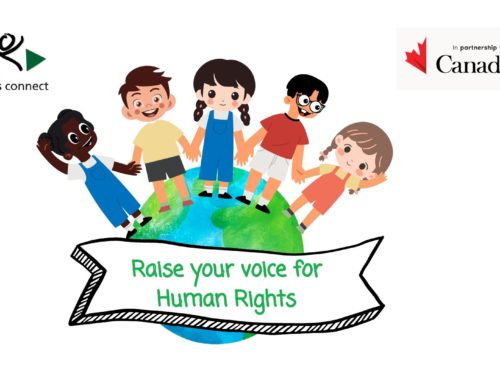On the occasion of the joint celebration of 30 years of the Convention on the Rights of the Child and 40 years of the Convention on the Elimination of all forms of Discrimination against Women, Child Rights Connect spoke of the need for inclusive and meaningful girls’ participation in human rights mechanisms.
The celebration event, held in Geneva on 25 October 2019, included an intervention by Alex Conte, Executive Director of Child Rights Connect, which follows:
Thank you for the opportunity to reflect on the issue of girls’ participation in human rights mechanisms.
Safe and meaningful child participation at the United Nations forms a central pillar of the work of Child Rights Connect. This is because we see the process of empowering children to participate across all levels and contexts as the key means of achieving the implementation of children’s rights across all articles of the UN Convention on the Rights of the Child. Simply put: implementation of the Convention IS child participation; without this, a child rights-based approach is missing.
It is in this context that the CRC and CEDAW recommended in their joint General Comment on discrimination against women and on harmful practices (UN Doc CEDAW/C/GC/31-CRC/C/GC/18 (2014)) that: “…any efforts undertaken to tackle harmful practices and to challenge and change underlying social norms are holistic, community based and founded on a rights-based approach that includes the active participation of all relevant stakeholders, especially women and girls”. In the framework of child rights during adolescence, the CRC has also highlighted that a rights-based approach calls for recognition and respect for the dignity and agency of adolescents (General Comment No 20, 2016).
Ensuring girls’ rights, internationally and nationally, therefore calls on us to listen to girls’ accounts of their lived experiences; and we must hear directly from them, not from adults whose assumptions may cause them to unconsciously or otherwise misinterpret or re-direct messages from children.
I would emphasize in this context that we must ensure the participation of both children and youth. An age perspective is increasingly integrated in the work and functioning of the UN mechanisms. But this is still often with a focus on youth (excluding children) or on adolescents (either excluding or not thinking about all children, by which I mean all persons under the age of 18, giving due weight to the age and maturity of the child, as called for in Article 12 of the Convention on the Rights of the Child).
Yet we know from our experience that the participation and empowerment of younger children leads to even stronger and more empowered participation by adolescents and youth. Reflecting on the title of this event, if we are to pave the way for girls’ rights, we must begin at as early an age as possible.
At the Committee on the Rights of the Child, the past five or so years has seen an exponential growth in child participation that is balanced, meaningful and safe. The Committee has developed working methods on child participation in its reporting process (UN Doc CRC/C/66/2 (2014)) and in its Days of General Discussion (UN Doc CRC/C/155 (2018)); and it provides for consultations with children during the drafting process of its General Comments. The Committee’s Working Group on child participation is codifying a safeguarding policy and procedure. We, at Child Rights Connect, facilitate child participation through various means, including Child Advisory Teams. Anecdotally, where we see children engage with the Committee, we observe a very high proportion of girls directly engaged in dialogue with Committee members.
These are important developments. However, as recognized by the Special Rapporteur on the situation of human rights defenders, although girls promote and protect a wide range of rights: “because of their age, dependent status and other aspects of their identity, they often face challenges” (UN Doc A/HRC/40/60 (2019)). This means that if we are to ensure that what we see at the UN is inclusive and meaningful – and if we are to ensure that gaps in girls’ participation at the UN are filled – we need to consider the entire cycle of engagement opportunities leading up to and following participation with UN mechanisms.
Without this, we cannot be sure that appropriate steps are being put in place to overcome intersecting challenges that pertain at the national level. As recognized by the Special Rapporteur, for example: the gender-sensitive nature of many of the issues that girls raise are often considered private or shameful, leading family members to pressure them to give up their advocacy efforts; failing that, girls may lose family support because of their activism.
We also know from last year’s Day of General Discussion of the Committee on the Rights of the Child on children as human rights defenders that: at the community level, girls are in many countries expected to stay at home to do domestic work while boys are encouraged to speak in public; the situations of indigenous girls and girls in armed conflict involve a complex intersection of different status and additional barriers for them to act as human rights defenders; and girls are at greater risk of reprisals.
So, if we are to ensure girls’ inclusive and meaningful participation in human rights mechanisms, we must therefore look behind what we see here at the UN to overcome these challenges and allow for their empowerment in a safe and meaningful way.










Leave A Comment